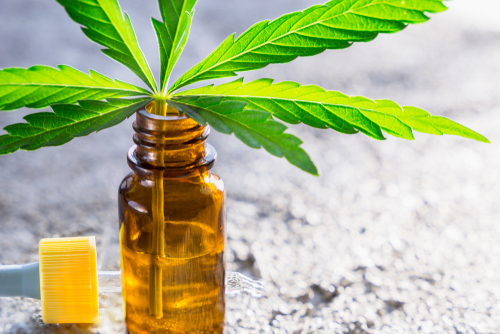A first-of-its-kind meta-analysis of existing research has reviewed the effects of cannabinoid drugs on the experience of pain.
The Centers for Disease Control and Prevention (CDC) suggest that up to 50 million people in the United States have chronic pain.
An increasing amount of people now turn to the medicinal benefits of cannabis for treating and alleviating pain.
As a result, scientists are trying to keep up by studying the effects of cannabinoids on pain.
So far, however, studies have produced mixed results. A recent study that spanned over 4 years found “no evidence” that cannabis alleviates chronic pain that is not associated with cancer.
New research puts forth an interesting explanation for why the current clinical evidence does not fully support the popularity of cannabis as a painkiller and people’s subjective accounts of its benefits.
It may be that the “feel-good” factor in the use of cannabis and cannabinoid drugs makes pain “more tolerable” and “less unpleasant,” suggests the new study, and that the benefits of cannabinoid drugs may operate more on an affective level rather than a sensory one.
Martin De Vita, a doctoral researcher in the clinical psychology program at Syracuse University in New York, led the new study, which was published in the journal JAMA Psychiatry.
He explains the motivation for the new research, saying, “Cannabinoid drugs are widely used as analgesics [painkillers], but experimental pain studies have produced mixed findings.”
“Pain is a complex phenomenon with multiple dimensions that can be affected separately,” adds the researcher. “Patients reliably endorse the belief that cannabis is helpful in alleviating pain; however, its analgesic properties are poorly understood.”
Pain feels ‘less unpleasant, more tolerable’
To help clarify the analgesic properties, De Vita and colleagues examined over 1,830 experimental studies on the effects of cannabinoids that were carried out over a 40-year period.
Cannabinoids are active chemical substances in the cannabis plant, of which tetrahydrocannabinol (THC) is one. THC binds to pleasure-controlling brain receptors and boosts levels of dopamine, a substance known as the “sex, drugs, and rock ‘n’ roll” hormone due to its euphoric effects.
After narrowing the initial pool of studies down to 18, the researchers looked at data from over 440 study participants. The data were also separately examined by two independent reviewers.
“The mean quality and validity score across the studies was high,” notes De Vita, “and analyses did not suggest publication bias.”
The results revealed that cannabinoid drugs correlated with “modest increases in experimental pain threshold and tolerance,” and a reduction in the “perceived unpleasantness of painful stimuli.”
However, the researchers found no association with a reduction in the intensity of the experimental pain, or in hyperalgesia, which is a heightened sensitivity to pain.
Therefore, the authors conclude, “Cannabinoid drugs may prevent the onset of pain by producing small increases in pain thresholds but may not reduce the intensity of experimental pain already being experienced.”
“[I]nstead,” they say, “cannabinoids may make experimental pain feel less unpleasant and more tolerable, suggesting an influence on affective processes.”
“What this means is that cannabinoid analgesia may be driven by an affective, rather than a sensory component. These findings have implications for understanding the analgesic properties of cannabinoids.”
Martin De Vita
“The cumulative research synthesized in our review has helped characterize how cannabis and cannabinoids affect different dimensions of pain reactivity,” De Vita adds. “It may underlie the widely held belief that cannabis relieves pain. For now, we still have much to learn.”
(94)





Leave A Reply